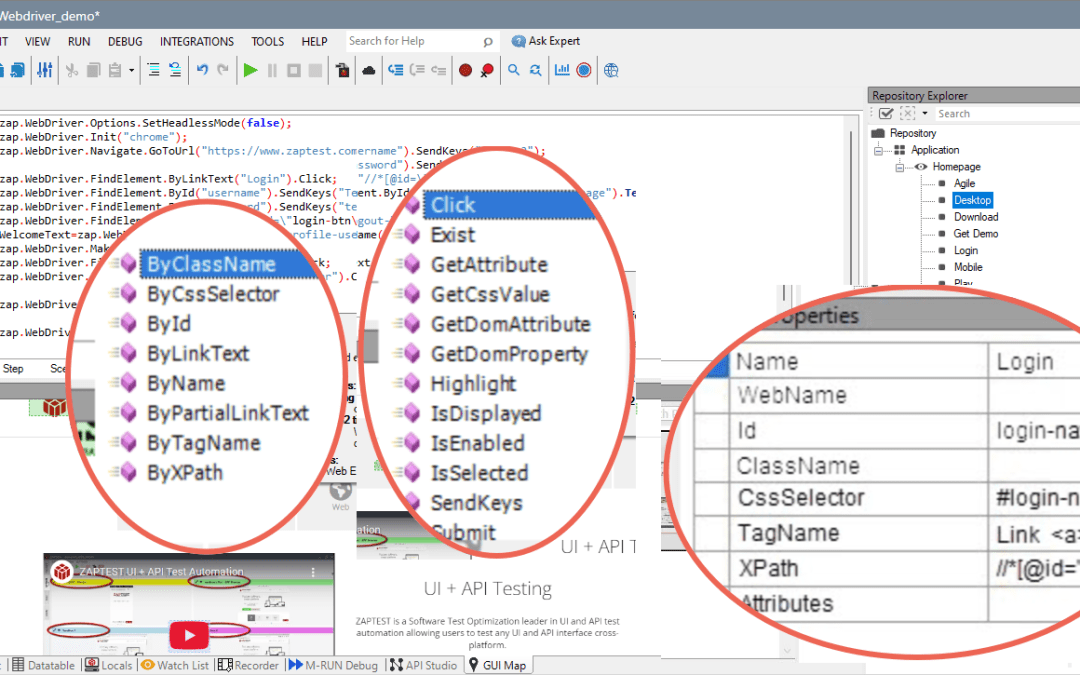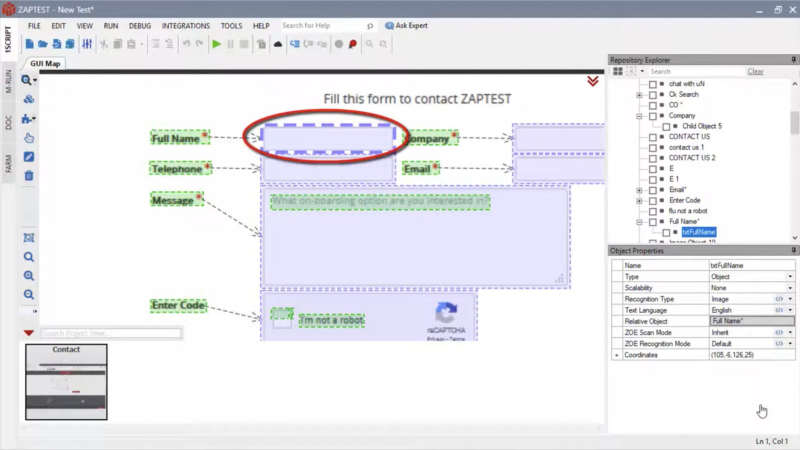Digital transformation is changing the world of work at an incredible pace. It’s no exaggeration to suggest that almost every role and industry will be affected by automation. As things stand, many verticals have already changed beyond recognition.
Software development is one of the primary industries that stand to benefit from automation. Companies have been crying out for coders in recent years. Business leaders are still struggling to find new hires to fill engineering roles, with many vacancies sitting open for months.
Robotic Process Automation and Test Automation can help ease the burden on employers and employees. However, there is still a lot of confusion about these technologies, with many people believing they describe the same thing.
In this article, we’ll look at why RPA and Test Automation are similar, how they’re different, and, most importantly, how both tools can help businesses in an era where great software engineers are in short supply.
Robotic Process Automation vs
Test Automation: A brief overview
Before we delve into a full-on RPA vs automation testing comparison, it’s worth sketching out a rough definition of each term. From there, readers will get a sense of the tasks technology performs and the problems they can solve.
1. Robotic Process Automation
Robotic Process Automation (RPA) is software that aims to learn and replicate computer tasks that are traditionally performed by humans. This type of automation is limited to straightforward rule-based tasks that follow predictable steps.
For example, businesses use RPA for things like:
- Data entry or migration
- Logging in and out of applications
- Reading and extracting information from emails
- Converting files
- Filling spreadsheets
- Routine queries
RPA helps businesses mechanize high-volume and repetitive tasks. This process saves time and money. It also means that human workers are liberated from tedious tasks, allowing them to make more meaningful contributions in other ways.
2. Test Automation
Test Automation is a software development tool. It shares some similar goals to RPA in that it seeks to save time, money and free human workers from monotonous tasks. Instead of expensive and time-consuming manual testing of software development projects, Test Automation software allows teams to perform quick, thorough, and deep tests on their projects. The process reduces costs and leads to faster releases.
These brief overviews help establish a baseline for the utility of both software. However, to more fully understand their differences, similarity, and utilities, we’ll need to delve far deeper. For that, we must explore each technology separately.
What is Robotic Process Automation (RPA)?
Robotic Process Automation (RPA) — frequently referred to as Process Automation — is an innovative type of software that performs tasks that were traditionally the domain of manual human operators. In plain terms, RPA tools are software “bots” that can observe and learn human tasks with the aim of reproducing them without manual intervention.
RPA tools operate on a user interface (UI) much in the same way that a human does. For example, let’s say that a medium-sized enterprise is finally moving with the times and has decided to migrate to the cloud. They choose to use the popular Extract, Transfer, Load (ETL) data migration strategy to move from their archaic on-prem servers.
The enterprise has a large and cumbersome database. They decide on a new data structure that better reflects their business. Extracting, verifying, and mapping the data to the new cloud structure is a mammoth task. However, it’s rule-based and predictable, which makes it an excellent candidate for RPA.
In this scenario, the enterprise can show the RPA the predictable and rule-based steps required to migrate the data.
These include:
- Accessing the legacy database via login permission
- The long process of both extracting and then verifying the data
- Making any desired changes or alterations to the data
- Signing into the cloud database
- Pushing the data to the new database schema
From here, RPA tools can monitor a manual worker performing the steps required for the ETL. The bot notes down the actions humans take, logging keystrokes, application use, and other graphical user interface (GUI) actions. Once the bot knows the steps, it can take over and perform these laborious and time-consuming tasks with a once unimaginable speed and accuracy.
Of course, this is just one of a near-endless array of examples of how RPA can help businesses of every size. To get a more comprehensive rundown of RPA’s capabilities, read our Complete Guide to Robotic Process Automation (RPA).
1. Why do businesses need Robotic Process Automation?
There are lots of different factors that make RPA an attractive option for businesses. For starters, it can vastly increase productivity because software robots can work faster, harder, and more accurately than their human counterparts. Secondly, it’s a great way to save the costs of manual workers and outsourcing.
But perhaps most significantly, it offers businesses a way to bring the most value from their human workers. Humans possess general intelligence; we are built for using our imagination, problem-solving, creativity, and social tasks.
Robots, on the other hand, excel at a more narrow type of intelligence. If we give them simple, rule-based tasks, they can complete them with relentless speed and accuracy. It makes sense to farm repetitive, high-volume tasks out to “bots”.
2. The problems that RPA solves
One of the best ways to understand the impact of RPA software on the business community is to explore some of the critical problems it solves. Here are some reasons RPA is one of the fastest-growing types of enterprise software on the market.
2.1 Keeping legacy systems active:
RPA tools help organisations with legacy systems stay competitive without expensive overhauls. RPA acts as a software layer on top of these often tried and trusted systems. The result is that perfectly functional software doesn’t need to go to waste.
2.2 Reduce costs:
Businesses need to find new ways of staying competitive. RPA offers an excellent avenue to reduce labor and outsourcing costs by taking over manual labor. The overall result is a leaner, more efficient business.
2.3 Employee satisfaction:
A tight job market incentivizes employees to seek new opportunities. RPA tools allow workers more autonomy to pursue meaningful rather than repetitive tasks, which boosts employee engagement and satisfaction and, ultimately, retention levels.
2.4 Accessibility:
A shortage of coders shouldn’t stop teams from building the applications they need to achieve high productivity levels. RPA tools are codeless, meaning anyone can use them to automate their work, even non-technical employees.
What is Test Automation?
Test Automation software helps businesses get quick, accessible feedback about their products during the development lifecycle. It has grown in both popularity and relevance during the rise of agile software development. As engineers write code and push it to the repository, Test Automation software runs tests to identify problems. This iterative approach helps teams avoid running into expensive and time-consuming problems down the line.
Test Automation is an excellent solution for
several different stages of software development.
1. Unit testing:
Unit testing is a classic component of agile methodologies. It splits a product into discrete components and tests each one as it goes. For larger projects, this approach is prohibitively expensive to do manually. As such, it’s an excellent candidate for automation.
2. Integration testing:
Modern applications integrate with other software through APIs. Test Automation can replicate these conditions to give developers an understanding of the functionality of this element of their application.
3. Graphical user interface testing:
Graphical user interface (GUI) testing examines an application’s interface to ensure it runs smoothly and predictably. While there is merit in taking a manual approach, there are several areas where time and money are saved through automation.
4. Regression testing:
Regression tests help developers determine if code updates have inadvertently affected the integrity of a program. If code changes produce bugs or other undesirable outcomes, the app rolls back or regresses to the previous version. Because these tests are frequent and high volume, they’re also excellent candidates for automation.
5. End-to-end test:
End-to-end testing is the most comprehensive type of software test. As the name suggests, it encompasses everything from components to systems and integrations. In other words, it mirrors the end user’s interaction within the program. Automating end-to-end tests can be expensive. So, it’s best to use Test Automation to meet tight deadlines.
The above use cases are just some ways that Test Automation can help developers. For an even deeper dive into Test Automation, consult our article A Complete Guide to Software Testing Automation.
Why do businesses need Test Automation?
The pace of software development has increased to unimaginable levels over the last few years. Competition is high and fiercer than ever. Quick turnarounds and deliveries are a competitive necessity, which adds colossal pressure on testing and quality control (QA) professionals.
There is also a sizable commercial incentive to reduce software development cycles and get to market as quickly as possible. Testing is one of the most significant bottlenecks. Industry norms suggest that testing costs somewhere in the region of 15% to 25% of the entire project.
Manual testing for bugs is laborious and time-consuming. It’s also costly. It’s clear why developers would be interested in software that tests code with speed and accuracy. Software testing robots can perform repetitive tasks that mimic how a user will interact with the final product. The technology can perform these tasks thoroughly, meaning testing is deep and reliable.
1. Can businesses discard manual software testing?
While it might be time-consuming and expensive, totally discarding manual testing is difficult. Running the rule over an application for bugs is at the core of what testing should achieve, but it’s not the only thing developers will want to know.
For example, user experience (UX) is a massive part of any application. Developers still need to know if their software is easy to use and intuitive, how potential users feel about design elements, and what features users like or dislike.
2. The problems that Test Automation solves
Reduce development costs:
As anyone who employs software engineers knows, salaries are sky-high. Digital transformation has happened at such a pace that the demand for developers has outstripped demand. Testing is an essential part of the software development process. Test Automation allows teams to reduce the cost of relying on developers for that kind of work, freeing them to get on with doing what they do best: coding!
Employee satisfaction:
Software testing is repetitive and time-consuming. While some developers find it satisfying, many do not. Test Automation frees up your team to do more fulfilling and creative tasks that boost employee satisfaction.
Reduce time to market:
Once a project gets the green light, there is a limited time to get to market. The world of software development is a graveyard of great ideas that just got there too late. Test Automation reduces a notorious development bottleneck, allowing developers (and investors) to reap the rewards of their hard work within shorter timeframes.
RPA vs Test Automation: The similarities
Now that we’ve established clear definitions of RPA and Test Automation, you might wonder how they get confused with each other. However, both tools have a surprising amount in common. Let’s explore these similarities.
1. Increased productivity:
Both RPA and Test Automation allow businesses to perform traditional manual tasks in a fraction of the time.
2. Reduced costs:
Embracing automation tools reduces demands on manual workers, saving businesses significant resources.
3. Efficiency:
Automation tools allow businesses to run more efficient, leaner operations.
4. Boosting employee satisfaction:
As mentioned earlier, automation tools allow workers to perform value-driven tasks, leading to a happier, more harmonious workplace.
RPA vs Test Automation: The differences
Yes, RPA and Test Automation have a fair amount of crossover in terms of the benefits they grant a business. However, while they arrive at similar endpoints, the paths each technology takes to get there are quite different.
Let’s explore the difference between this software.
1. Purpose:
RPA is about turning manual business processes into automated tasks. Test Automation is about making software development more efficient by reducing reliance on manual testing. While they are both examples of automation, these tasks are distinct.
2. Departments:
Test Automation is something that is almost exclusively performed within software development and QA departments. In contrast, RPA is suitable to help any department with high-volume, rule-based tasks that it wants to automate.
3. Personnel:
RPA is designed to be accessible to any member of a team, regardless of their technical or coding capability. The better end of RPA tools are fully codeless. Many Test Automation tools require some level of coding knowledge, although codeless versions are available.
4. Scope:
In most cases, Test Automation focuses on a solitary application or product. Typically, a product that a software development team is currently working on. RPA will typically focus on the interplay between many different applications.
5. Environments:
One of the most significant differences between Test Automation and RPA is that they run in different software development environments (SDEs). Again, this comes down to their distinct purposes. Test Automation occurs in the development environment, while RPA runs in the production environment.
6. Data:
RPA acts on live data within the production environment. Test Automation typically needs test data. This distinction is vital for businesses to comply with data governance regulations like GDPR.
What is RPA testing?
As we’ve mentioned above, RPA’s most valuable applications involve straightforward, well-defined tasks. Within that context, RPA testing involves checking the data inputs and outputs of any RPA workflow.
Businesses should check any automation they implement. There are three specific areas that should fall under scrutiny. They are:
1. Is the bot selecting or retrieving the desired data source?
2. Is the robot handling the data source correctly and predictably?
3. Is the overall output of the automation expected?
To be clear, RPA testing is a different concept than using RPA for testing, which we will deal with in the section below.
Can I use RPA for Testing?
Adaptability and flexibility are two of the hallmarks of RPA software. As such, it’s reasonable to assume that businesses could use the tech for Test Automation. However, while it’s possible to make an argument for using RPA as a Test Automation tool, there are some limitations that we need to consider too. Let’s explore the relative merits of the question.
1. The pros of using RPA for Testing purpuses:
RPA tools mimic human-computer actions. Many of these actions can be used to replicate real users interacting with an application. With proper foresight, development teams can build a series of tasks that test many of the parameters of a piece of software. For example, creating accounts, performing transactions, or anything else pertaining to the healthy functioning of the application. The obvious downside here is that the programs must be at some level of maturity in their development life cycle.
Another thing to consider is Test Automation usually focuses on a single app. In contrast, RPA is concerned with automating tasks across several applications. Interestingly, RPA cross-platform functionality can be a benefit for some tests, in particular, those that involve testing a program with a lot of integrations.
2. The cons of RPA Testing:
Of course, teams mustn’t lose sight of the limitations of RPA tools. The software uses simple if/then/else that map processes for bots to execute. Broader, deeper testing requires more complexity.
There is a chasm here that developers must contend with. Namely, RPA tools are best suited to clearly sequenced tasks within production environments, while Test Automation software thrives in test environments, giving developers actionable feedback about where their software is failing to hit the mark.
So, yes, RPA can be part of an overall Test Automation setup. Yet, to rely solely upon that technology would impose unwelcome limitations. Dedicated Test Automation software is necessary to handle the complexities of modern applications.
Where Test Automation and RPA tools converge
We’ve spent many words underlining the core differences between Test Automation and RPA tools. By now, it should be clear that they are separate disciplines with different goals and functions. However, they both exist under the broad banner of automation tools.
That said, many businesses use and benefit from both tools. Let’s take an example of a firm that is interested in Hyperautomation. For the uninitiated, hyperautomation describes a process where a business wants to automate as many processes as possible within its organisation, under a mindset that everything that can be automated should be automated..
Part of the discovery process of hyperautomation involves looking at which task can or cannot be automated. Simple, high-volume, rule-based tasks are perfect candidates for RPA. However, there are other more complex tasks that might not quite fit the bill. But that doesn’t mean they can’t be automated with the right technology.
Using Test Automation for projects and RPA for business processes will push an organisation further along the hyperautomation spectrum. However, there are also options for teams to use both tools in concert.
Test Automation vs RPA tools
There are quite a few different Test Automation and RPA tools on the market. Each application has its own peculiarities, not to mention advantages and disadvantages. However, one very noticeable thing is that most tools serve either Test Automation or RPA functionality.
This situation creates an issue for teams that need both tools together.
Innovative automation software like ZAPTEST offers both state-of-the-art RPA and Test Automation tools that were built to address the challenges of a future defined by hyperautomation. Consolidation of Test Automation and RPA tools has several benefits for users of tools like ZAPTEST.
Some of these benefits include:
- Lower licensing costs: Teams can get both tools rolled into one instead of paying for two separate tools and licenses.
- Efficiency: Many businesses view Test Automation and RPA as distinct concepts. However, it’s possible to reuse Test Automation modules with RPA workflows. Recycling these modules can reduce costs and result in quicker builds.
- Less training and onboarding: Using one automation tool for testing and RPA means employees only need to familiarise themselves with one solution.
- Better insights: Testing is all about gathering actionable insights. Teams can convert what they’ve learned through testing into more effective RPA workflows.
- Troubleshooting: Test Automation tools are renowned for their troubleshooting and detailed reporting. However, instead of using them for hunting bugs in their application, teams with consolidated platforms can use the features to optimise and fix their RPA workflows.
- Added value: In addition to the obvious ROI benefits of paying for one tool that tackles two automation disciplines, leading Test + RPA automation tools provide complementary service and functionality at no extra cost. For example, ZAPTEST includes under their fixed cost license, functionality and services like ZAP Experts working alongside the client as part of their team, unlimited licenses, and even white-label implementation for dedicated partners.
Final thoughts
RPA and Test Automation tools have emerged at just the right time. Post-COVID, both employees and employers are asking serious questions about the nature of work. Automation tools help reduce repetitive, mundane tasks, allowing workers to unleash their creativity.
While RPA and Test Automation tools focus on distinct tasks, there are several spots where they crossover. As businesses move towards hyperautomation, finding novel ways to mechanize tasks will become a necessity. Now is not the time to get left behind.







